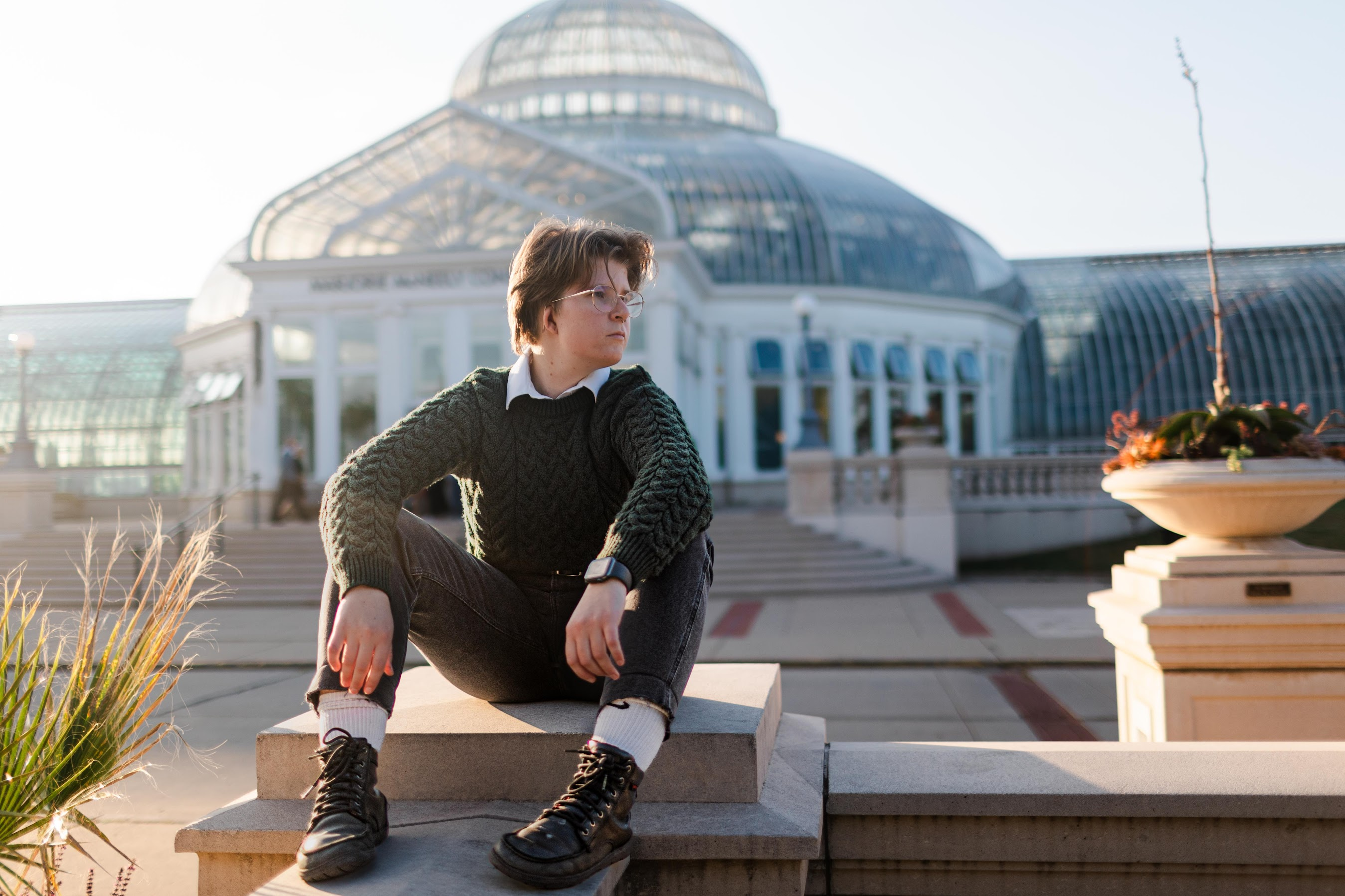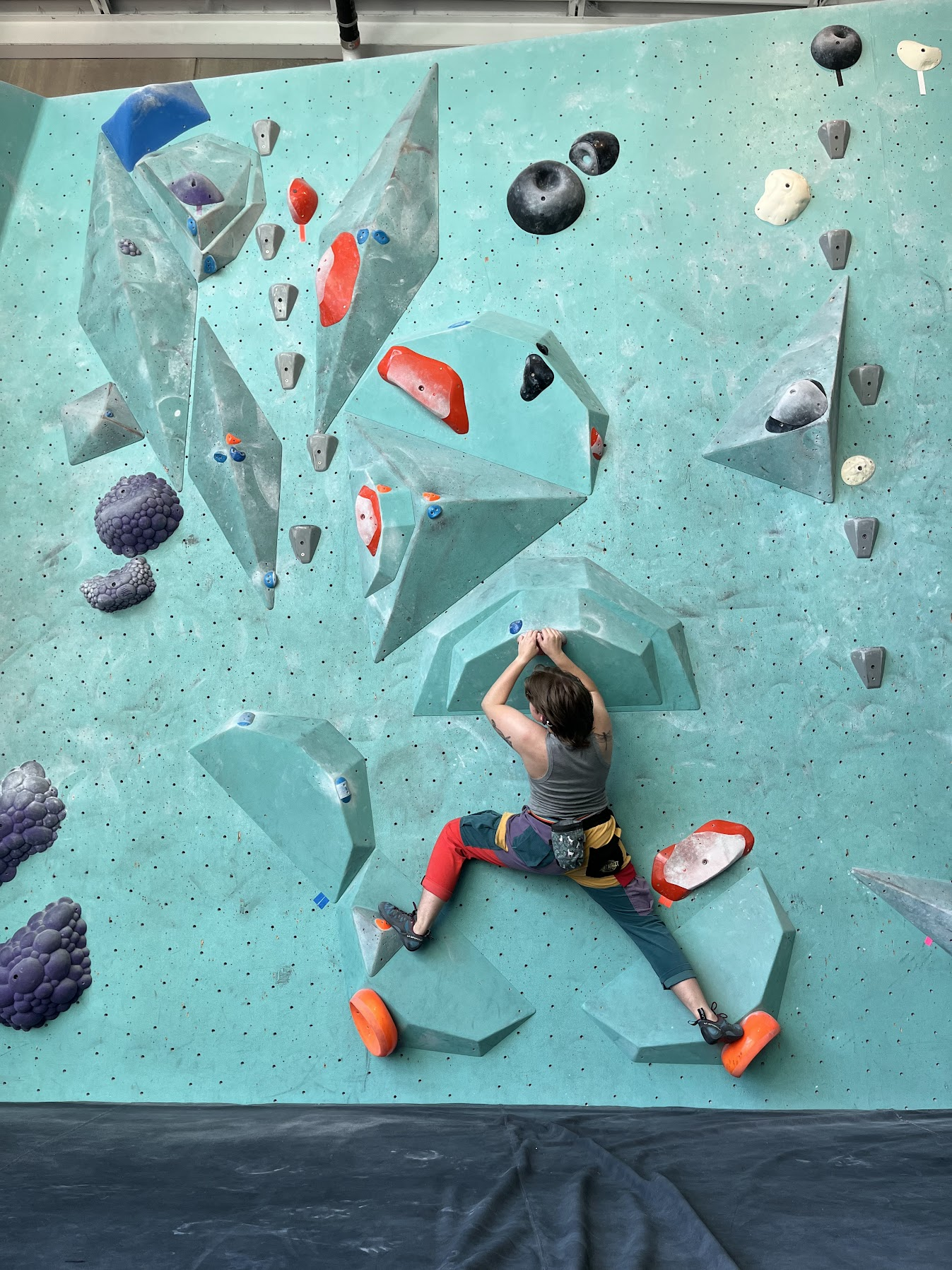Tehya Daniels grew up in White Bear Lake, MN. She is currently a junior at the University of Minnesota, Twin Cities, where she is a neuroscience major. Tehya is a transfer student who spent her first two years of school at Smith College in western Massachusetts. After two years at Smith, she decided to take a gap year and spent the year working and living at home, before deciding to transfer to the University of Minnesota.
“My transfer journey is an interesting one, and intricately tied to my identity as a hard-of-hearing person.” She graduated from high school in 2020, so as her college acceptance letters were rolling in, the world was shutting down. Her first year at Smith College was fully remote. In her second year, they were in person but masks were still required. “At this time, I was not confident in my signing abilities and didn't feel comfortable requesting an interpreter. I felt incredibly isolated because of my hearing.” Before the pandemic, she prided herself in being such a strong advocate for what she needed, “But after being so socially drained and isolated, I felt broken and had no energy to advocate or try to figure out a better situation.” Tehya ended up taking a gap semester from Smith, fully intending to come back, because of a head injury. She played club hockey at Smith and was diagnosed with a mild concussion, but after months, Tehya was still not better. She still dealt with the side effects of this injury and decided to move back home to the cities.
Upon arriving in the cities, Tehya discovered Climb ASL and started going to more events and found an amazing Deaf community. “My social confidence skyrocketed. I finally knew who I was socially without any communication barriers. Before this, I was always questioning if I was "shy" or "antisocial" because that was my personality. I was shocked to learn that communication barriers are real!! And being hard of hearing around hearing people all the time is exhausting and not my fault; there's nothing wrong with me.” Tehya considered staying in the cities, so she enrolled at the University of Minnesota, Twin Cities. She decided to stay because of the community, “and I was falling in love with Minneapolis as a city and place to live. I still cried when I officially withdrew from Smith and enrolled at UMN. I love both schools, and they have given me what I need at the moment.” In staying, she gets to climb every week with Climb ASL at Minneapolis Bouldering Project! “Because of my experience and sort of ‘identity revolution,’ I also felt confident enough to request interpreters for school, and UMN has amazing staff interpreters and I feel so grateful for the access I have now in school.”
Tehya identifies as hard of hearing and queer. She uses a cochlear implant on one ear, and cannot hear anything in her other ear. Her hearing loss is genetic; her sister and dad are both hard of hearing as well. She was born hearing and her hearing loss progressed. By the time she was 2, she had hearing aids. When Tehya was 4, she hit her head on the monkey bars and woke up and the rest of her hearing was gone. For 6 months, she communicated primarily by reading lips until her cochlear implant was activated. Tehya’s parents used some sign language with her during her younger years. Tehya also attended speech therapy and an oral school and was not super interested in learning ASL, despite her parent's efforts. “When I was 9, my sister and I had a Deaf nanny for the summer! I had exposure to ASL as a kid but never felt like I had an identity or like that was the community I was supposed to be a part of.”
Tehya was mainstreamed at a private school nearby until high school, where she went to White Bear Lake High School. She used an FM microphone system at school. “I was fortunate enough to go to a high school that offered ASL classes, so I took up to ASL 3 at my high school, and then took ASL 3 and 4 at the college level my senior year at St. Kate’s. I knew that I wanted ASL to be a part of my life because I was tired of being a part of "two worlds" and not being fluent in either language/community.” While in high school, she tried out for the first women's deaf national hockey team and made the team! “We played in a two-game tournament in New York against Canada in April of my freshman year. I remember during that experience I still didn't know a lot of ASL and had to take my CI off to play. I felt very isolated because although I was with peers, I still didn't know ASL and I thought it was kind of ironic that I was on a deaf team but I still felt alone and disconnected to the language and culture.”
Tehya is an undergraduate student at UMN. She wants to eventually pursue a PhD in neuroscience. While taking classes, she also works part-time at Wilderness Inquiry (WI). She started there last summer. WI is an outdoor nonprofit that specializes in giving typically marginalized communities the opportunity to explore the outdoors in a safe and accessible environment. Tehya loves working at WI, as she can be outside in a leadership position. Through the work, she has learned so much about herself, connected with so many amazing people, can be her fully authentic self in the workplace, and all of her identities are celebrated. “I also have had the opportunity to lead DDBHH affinity trips which has changed my perspective so much on identity and community and what is possible for me (and other DDBHH folks!).”
“School is also kind of a job - I don't necessarily like school, but I am fascinated by what I am studying. I have always been interested in science, specifically biology. I am just so mind-blown by the fact that all of the experiences we have - joy, love, pain, sadness, etc, etc are all the result of biological processes. And the diversity of life on this planet can all be attributed to the genetic code in our DNA?! It is so beautiful and wild and awe-inspiring to think about. So learning about those things and exploring the cellular processes behind what we see and experience is a pursuit of knowledge but for me, also a spiritual pursuit. We will never understand everything in science, especially in terms of the biology of our brains, and I think that is also powerful and humbling, and I revel in that fact, while also craving discovery and deeper understanding. I also think that especially in this day and age, mental health is SO important. So studying the brain also feels important to me from the standpoint of what I can give back to help deepen our collective understanding of the human experience, particularly around mental health and trauma.”
She believes that “imposter syndrome” is her biggest challenge at work (at WI and as a student). “At WI, I was put on all the DDBHH trips, which I loved but I also had conflicting feelings about. I am still not fluent in ASL, so sometimes leading a group of DDBHH participants when I am not fluent felt weird or like I was not ‘deaf enough.’ At the same time though, when I was leading hearing participants, I had a hard time hearing so I didn't feel ‘hearing’ enough even though I ‘pass’ as a hearing person all the time. The reality is that DDBHH people have SO many communication backgrounds.” It has been hard for her to truly accept and love her identity as someone who is in this "in-between" state. “Sometimes I need interpreters to understand what hearing people are saying, but sometimes I need interpreters to understand what deaf people are signing. This feels really invalidating, like when will I ever truly belong somewhere? But that's the other thing, I have an amazing support system and so many DDBHH friends who also feel like they are caught in this in-between too, which is very validating for me to know I am not alone.”
As a student, imposter syndrome kicks in when she requests interpreters, “Because, again, I am hearing passing and don't feel "deaf" enough even though I miss a lot of information and having interpreters helps reduce my stress. My biggest challenge hearing-wise in school is group work, and I've been learning what works best for me and how to work with the interpreters while also voicing for myself and communicating with my peers about what I need from them access-wise. It is definitely a challenge, but I feel like I am finally being authentic in my advocacy and I know what I deserve, even if I don't feel it all of the time.”
Tehya shares the following thoughts and advice: “I think we as a society put a lot of emphasis on making work your passion. Although I am excited to go into science and (hopefully) do research, I don't want my work to consume me. I want to spend time with the people I love and build community. Community is SO important, especially because as DDBHH folks we tend to be marginalized and don't get the support we need, so we have to turn to the community for help. Community is SO important.” Tehya’s advice is “to like what you do for work but also find meaning in your life outside of work. Find other passions and things that feed your soul and inspire you! Finding other passions and inspirations will help you show up authentically at work and know what you deserve and how to connect in meaningful ways.”
Outside of work, Tehya enjoys climbing, hammocking, walking, and reading (“I identify as a reader but also rarely read, but when I do it's my favorite thing”). Recently she has been exploring more creative things, such as drawing and poetry, but only when she is in a specific mood.
The #CanDoAnything campaign showcases people who are deaf, deafblind, or hard of hearing at work, giving them an opportunity to share what they do at their jobs and explain how communication access works for them. This campaign shows what our community can do, which is anything!

